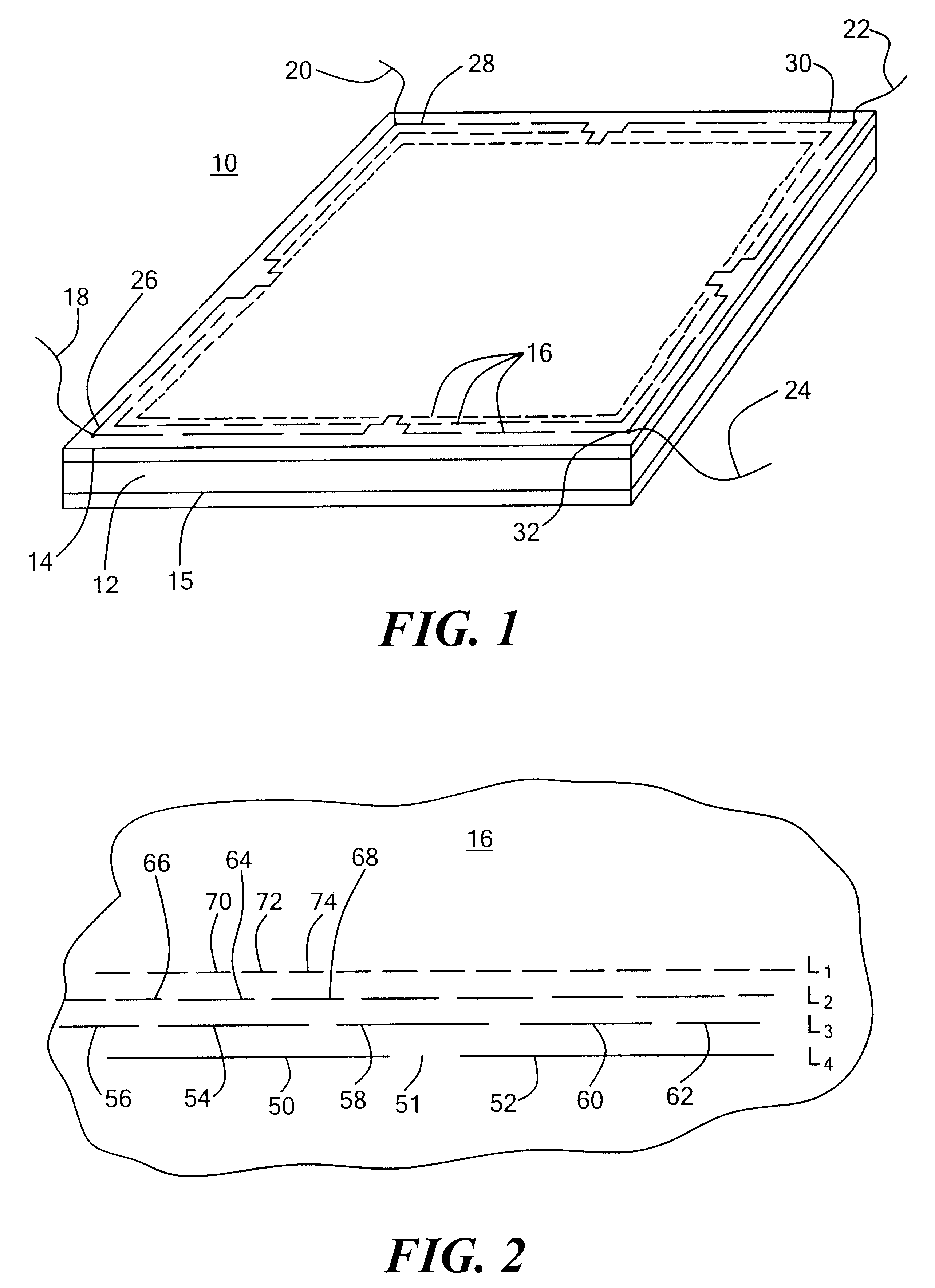Touch panel with improved linear response and minimal border width electrode pattern
a technology of linear response and electrode pattern, applied in the field of touch screen panels, can solve the problems of reducing the usable touch screen space, the size of the electrode pattern, and the cost of linearization efforts, and achieve the effect of improving linear response and minimal border width edge electrode pattern
- Summary
- Abstract
- Description
- Claims
- Application Information
AI Technical Summary
Benefits of technology
Problems solved by technology
Method used
Image
Examples
Embodiment Construction
Other objects, features and advantages will occur to those skilled in the art from the following description of a preferred embodiment and the accompanying drawings, in which:
FIG. 1 is a schematic three-dimensional view of the touch screen panel in accordance with the subject invention;
FIG. 2 is a schematic view of the unique electrode conductive segment pattern for the border areas of the touch screen panel shown in FIG. 1;
FIG. 3 is top view of a portion of the electrode pattern on the border area of the touch screen shown in FIG. 1;
FIG. 4 is a schematic three-dimensional view of the bottom of the touch screen panel shown in FIG. 1;
FIG. 5 is cross-sectional view of an embodiment of a resistive touch screen panel in accordance with the subject invention;
FIG. 6 is a schematic top view of one embodiment of the subject invention wherein conductive leads are deposited on a dielectric layer disposed over the resistive layer of the touch screen panel in accordance with the subject inventi...
PUM
 Login to View More
Login to View More Abstract
Description
Claims
Application Information
 Login to View More
Login to View More - R&D
- Intellectual Property
- Life Sciences
- Materials
- Tech Scout
- Unparalleled Data Quality
- Higher Quality Content
- 60% Fewer Hallucinations
Browse by: Latest US Patents, China's latest patents, Technical Efficacy Thesaurus, Application Domain, Technology Topic, Popular Technical Reports.
© 2025 PatSnap. All rights reserved.Legal|Privacy policy|Modern Slavery Act Transparency Statement|Sitemap|About US| Contact US: help@patsnap.com



